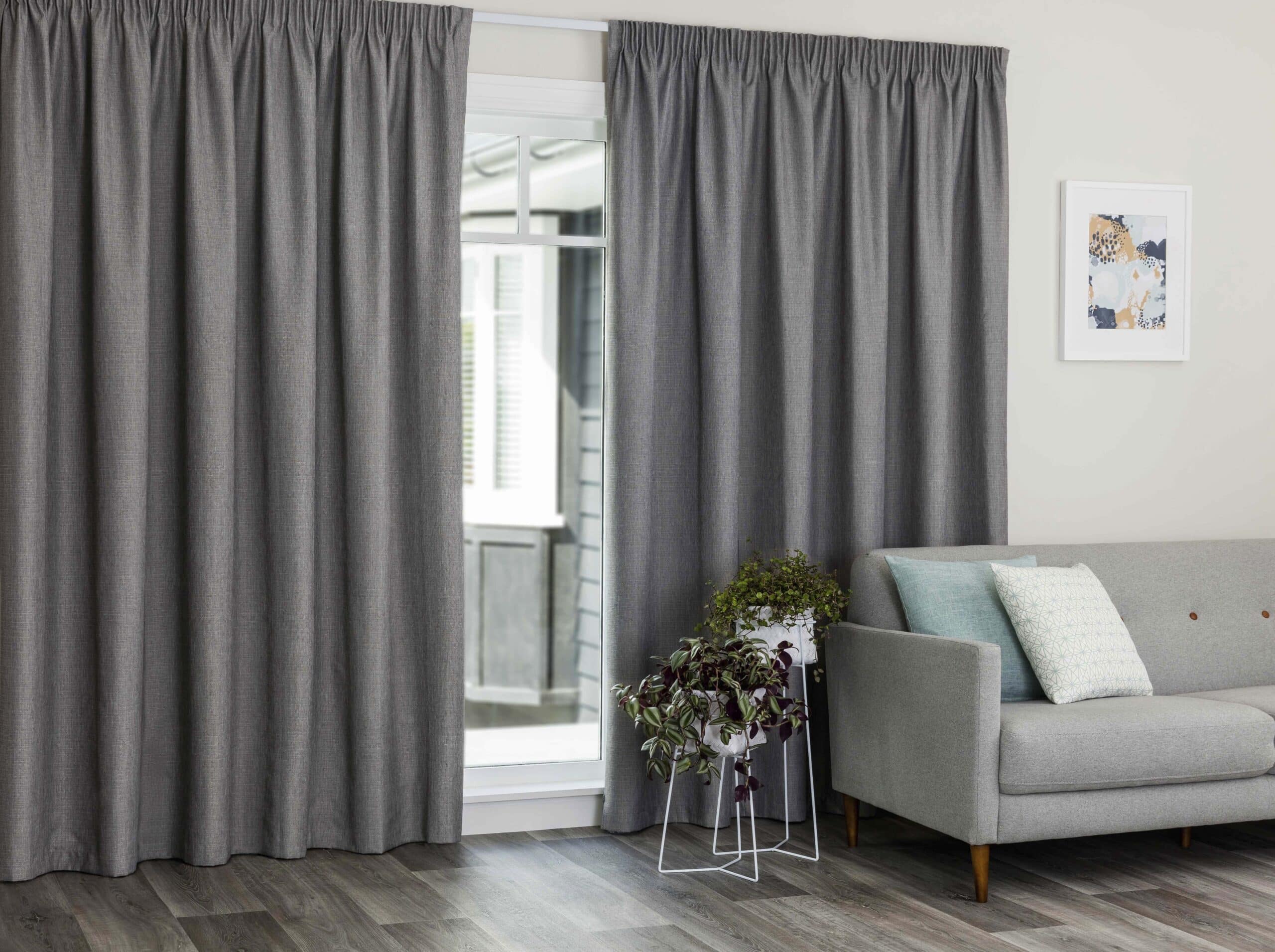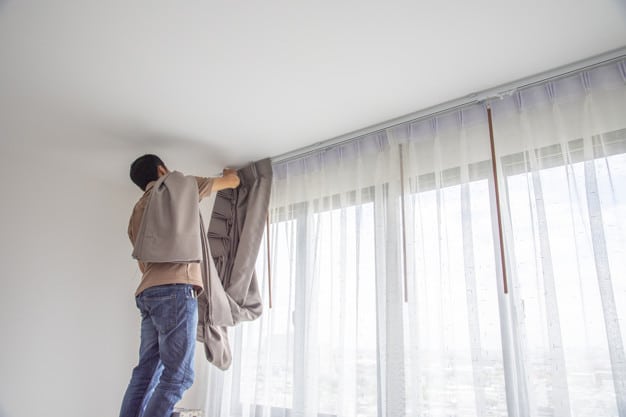On afternoons when Sheikh Zayed Road shimmers like a mirage and the asphalt radiates heat, Dubai’s sun can roast interiors to 40 °C and beyond. Choosing the best curtains for Dubai climate is therefore as strategic as selecting an AC unit. According to the UAE Ministry of Energy, well designed panels block up to 33 percent of solar heat gain and trim cooling bills by an average of 15 percent each year. Yet homeowners must juggle relentless UV, 60 percent humidity, and steady streams of desert dust. This guide explains how to pair fabric, lining, and fit with those extremes, compare blackout and thermal curtains for Dubai living, and style windows that still look showroom fresh. It also answers the web’s most asked questions, highlights brand new local research, and offers renter friendly tips you can use even in a short-term lease. By the end you will know which heat resistant curtains Dubai apartments and villas need for cooler days, quieter nights, and lower electricity bills.
How to Choose Curtains for Dubai’s Climate


WHY CLIMATE MATTERS WHEN CHOOSING CURTAINS IN DUBAI
Daily solar radiation here averages 8.3 kWh per m², while humid sea air accelerates mildew. Curtains built for London lofts rarely survive those extremes. Replace them with multilayer panels that engineers design to reflect heat, seal edges, and resist fading.
What type of curtains are best for hot climates?
Tightly woven, light coloured curtains with multiple layers deliver the strongest protection in extreme heat. Choose fabrics that weigh at least 280 gsm, build in a UPF 50+ reflective acrylic or aluminium lining, and run wraparound hems to eliminate side gaps. Mount the panels on a ceiling track to create an insulating air pocket against the glass. Khalifa University field tests (2024) show this specification lowers radiant heat by one third and darkens rooms enough for midday naps even in glass-walled Marina apartments. The same setup installs quickly and costs far less than glazing upgrades, making it the best curtains for Dubai climate newcomers can buy.
KEY CURTAIN FEATURES FOR HEAT PROTECTION AND COOLING
Performance depends on weave density, insulating linings, and precise fit. Mount rods at least ten centimetres above and twenty centimetres beyond frames; Khalifa University measured a two degree reduction in peak indoor temperature after this simple change. In short, the best curtains for Dubai climate rely on snug installation as much as smart fabric choices.
How can curtains reduce AC usage?
Curtains cut AC runtime by blocking solar gain and stabilising room temperature. A two-layer system reduced compressor cycles by 20 percent in a Masdar Institute field study (2024):
- Close at midday to trap cool air while the sun is fiercest.
- Open at dusk to flush the space naturally.
- Layer sheers with liners so you can fine-tune glare, privacy, and airflow.
For homeowners and renters alike, energy efficient curtains UAE retailers now stock phase-change panels that absorb surplus heat and release it after sunset, shaving DEWA bills and keeping compressors quieter for longer.
BEST FABRICS AND COLOURS FOR HOT WEATHER
Linen-poly blends wick moisture, while acrylic-coated polyester reflects up to 80 percent of UV according to a Dubai Municipality lab study (2024). Pale tones such as sand, pearl, and ivory absorb roughly 30 percent less heat than charcoal. When choosing curtains for hot climates, Dubai designers favour yarns that stay crisp after repeated washes and resist fading under desert sun.
What fabric is best for curtains in Dubai?
A linen polyester base cloth with a solar reflective backing tops the list for Dubai. The blend balances breathability with durability, laughs off fading, and stays light enough for regular laundering, a must for villas that face sandstorms. Interior designers looking for tactile layers often pair daytime sheers with blackout liners, a mix that solves glare on client screens while preserving a resort style vibe. Eco conscious buyers can push sustainability further by selecting Oeko-Tex certified yarns, cutting carbon without compromising comfort, and reinforcing their choice with curtains for hot weather credentials.

BLACKOUT VS THERMAL CURTAINS: WHICH WORKS BETTER?
Blackout curtains use dense foam to block 99 percent of visible light, reducing room temperature by two degrees. Thermal curtains add a reflective interlining that drops temperatures by three degrees, says the Masdar Institute Curtain Performance Report (2024).
Table 1 How the best curtains for Dubai climate compare on performance
| Curtain type | Light block | Avg temp drop | Expected life |
|---|---|---|---|
| Blackout | 99 % | 2 °C | 5–7 years |
| Thermal | 90 % | 3 °C | 6–8 years |
| Sheer + blackout layer | 60–99 % | 2.5 °C | 7 years |
Do blackout curtains help in the heat?
Yes. Blackout curtains dramatically cut indoor heat when installed correctly, especially in bedrooms. They reflect nearly all radiant energy striking the glass, push window side floor temperatures down by about two degrees, and keep rooms dark for uninterrupted sleep. Pair them with decorative sheers to soften the look and you get style without sacrificing performance. With proper stacking width and a ceiling track, they easily qualify as some of the best curtains for Dubai climate homes.
Are thermal curtains effective in warm weather?
Absolutely. Thermal curtains outperform blackout panels for all day cooling across Dubai. Laboratory data shows they bounce up to 70 percent of infrared radiation outdoors, while embedded microcapsules absorb midday heat and release it after sunset for steadier temperatures. Users report twenty percent lower DEWA bills, and the curtains qualify for local retrofit incentives. Breathable inner liners also reduce condensation, extending fabric life in humid coastal districts. No wonder energy efficient curtains UAE showrooms lead with these models.

STYLING CONSIDERATIONS FOR SUN-FACING WINDOWS
Pair sun blocking curtains with UV rated sheers so you enjoy skyline views without roasting. Ceiling tracks create seamless coverage, ripple fold headers stay elegant, and magnetic side returns keep panels anchored during shamal winds. Designers specify stacking widths at 120 percent of the glass span to seal edges, then use matte tiebacks to reflect light away from the cloth. Many projects add secondary sun blocking curtains in adjoining rooms for visual continuity and even temperature control, another reason they rank among the best curtains for Dubai climate interiors.
FINAL TIPS FOR CURTAIN SHOPPING IN THE UAE
When hunting for the best curtains for Dubai climate, start with exact measurements: record the trim to trim width and the ceiling to floor height for each window. Reputable shops label UPF ratings and let you test swatches under UV lamps. Stainless steel hardware resists coastal humidity, while antimicrobial finishes stop mildew before it starts. Renter friendly heat resistant curtains Dubai outlets now sell quick release tracks that leave zero wall damage on move-out. Prioritise bundles that combine sheers, blackout liners, and sun blocking curtains for living areas. Check lead times because custom orders can take three weeks, and always confirm return policies since colours shift under Gulf light.

Conclusion
Beating Dubai heat begins with the best curtains for Dubai climate, panels that reflect solar gain, seal window edges, and blend seamlessly with your décor. Choose breathable linen polyester weaves, add blackout or thermal liners, and mount hardware wide and high for a glove-like fit. These upgrades lower room temperatures, trim energy bills, and shield furnishings from UV fade. Whether you rent a Marina studio, own a desert villa, or design show homes, the right curtains will work as hard as your AC and pay for themselves in comfort. Book a free visit with Kurtains, feel the fabric samples in real life, and feel the temperature drop within days of installation.

